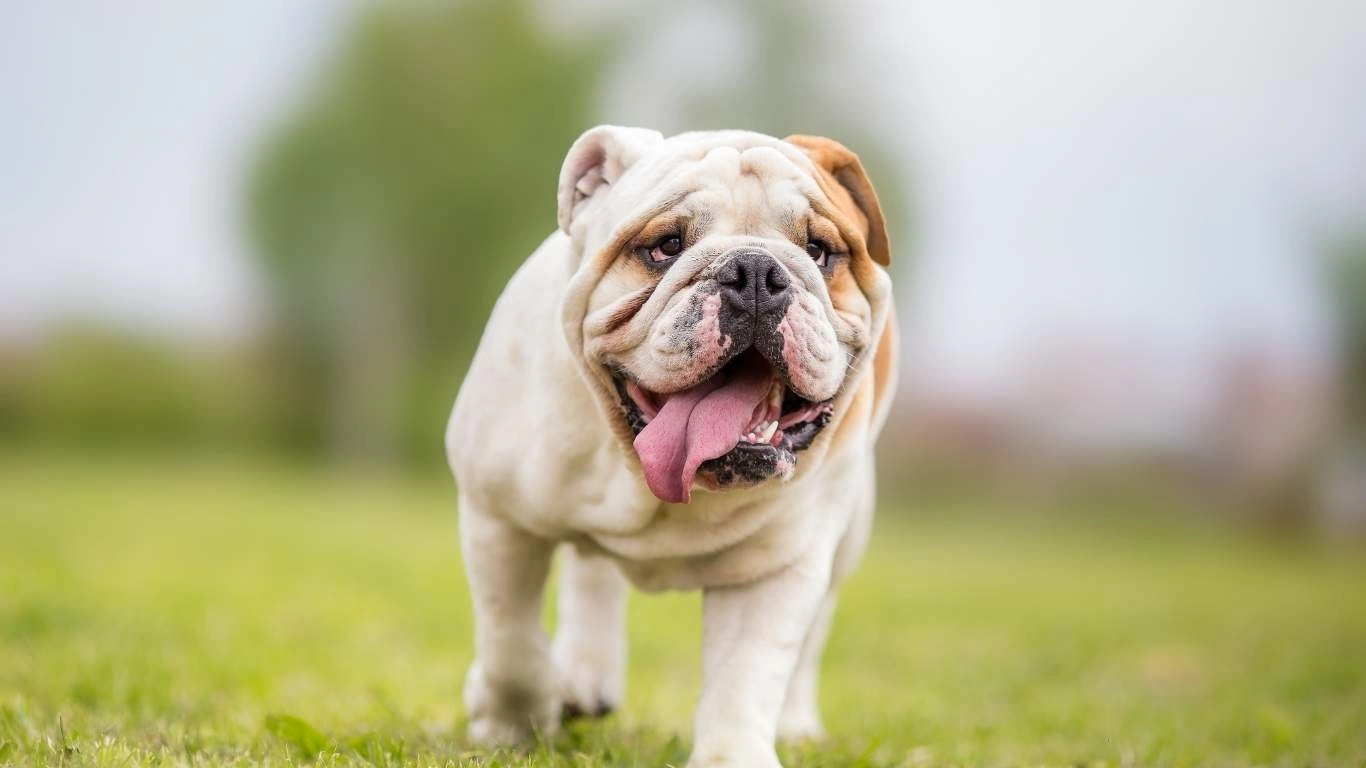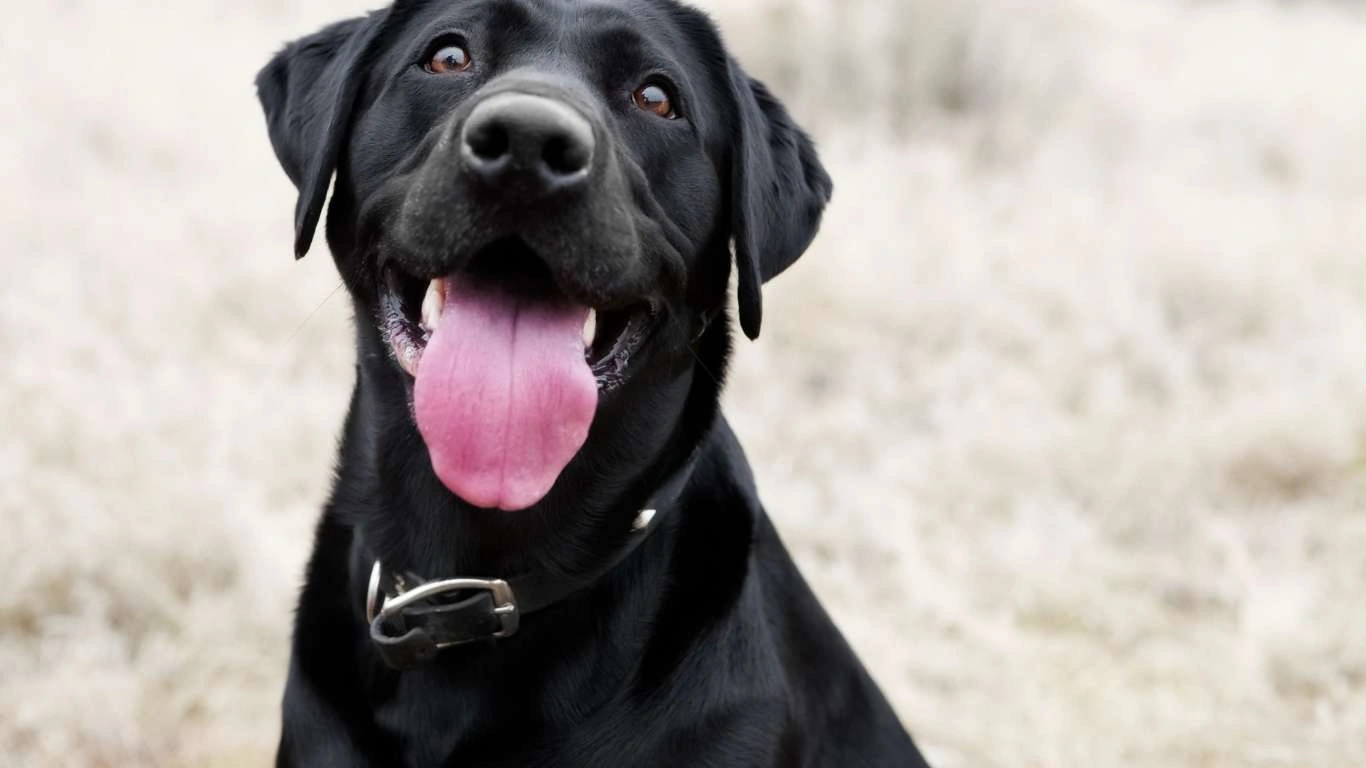Top Iron-Rich Meat Sources for Dogs’ Health and Vitality
When it comes to keeping our dogs healthy and happy, one of the key factors we often overlook is their diet. Sure, most of us know the basics—quality protein, healthy fats, and the occasional treat—but what about nutrients like iron? Iron is essential for carrying oxygen in the blood and supporting a strong immune system, which is why it’s so crucial for our dogs. As an Animal Care Specialist, I’ve seen firsthand how a well-balanced diet can do wonders for a dog’s overall health. One of the most effective ways to boost your dog’s iron intake is by focusing on high-quality, meat-based sources. Let’s dive into some of the best meat sources for an iron-rich diet for dogs.
The Importance of Iron in Your Dog’s Diet

Before we talk about the best meats to provide for your dog, let’s take a moment to understand why iron is so important. Iron is a vital mineral that plays a central role in your dog’s health. It helps produce hemoglobin, the protein that carries oxygen in the blood. Without adequate iron, dogs can develop anemia, which leads to fatigue, weakness, and a general decline in health.
Just like us, dogs need iron to support their muscles, organs, and overall bodily functions. Iron is also essential for their immune system and helps maintain their energy levels. It’s no surprise that the right amount of iron in your dog’s diet can make a noticeable difference in their vitality. Iron-rich diets help your dog maintain strong muscles, a shiny coat, and healthy skin, along with optimal energy levels. Trust me, I’ve seen dogs perk up and start acting like their old selves after getting their iron intake on track.
How Meat Helps Your Dog Get the Iron They Need

Now, the best way to deliver that crucial iron is through meat. While there are plenty of plant-based sources of iron, they don’t always provide the same bioavailability of the mineral as meat does. The iron found in meat, especially red meat, is heme iron, which is absorbed more easily by your dog’s body compared to the non-heme iron in plant sources. This means your dog will get more out of the iron you provide through meat, helping them maintain their strength and overall health.
But not all meats are created equal when it comes to iron content. Some meats are far richer in iron than others, and providing a variety of iron-rich options will ensure your dog is getting the nutrients they need for a long, healthy life.
The Best Meat Sources for an Iron-Rich Diet for Dogs
So, what are the top choices for iron-packed meats for dogs? Based on my experience, the following meats stand out when it comes to boosting your dog’s iron intake:
1. Beef

Beef is one of the best sources of heme iron for dogs. It’s rich in essential amino acids, which are the building blocks of protein, and contains a high level of iron that is easily absorbed by your dog’s body. Not only does beef help to maintain healthy red blood cells, but it also provides other important nutrients, such as zinc, B vitamins, and omega-3 fatty acids.
If your dog’s iron levels are on the low side, consider adding lean cuts of beef like ground beef, sirloin, or chuck roast to their meals. But be sure to remove any excess fat, as too much fat can lead to digestive issues or unwanted weight gain.
2. Lamb
Lamb is another excellent choice for an iron-rich dog diet. Like beef, lamb is a great source of heme iron, which is crucial for your dog’s blood health. It’s also a highly digestible protein, making it a great option for dogs with sensitive stomachs or allergies to other meats. Additionally, lamb contains essential fatty acids that promote skin health and a shiny coat, along with being a good source of zinc, selenium, and phosphorus.
Many dogs find lamb particularly tasty, so it’s often a favorite among picky eaters. If you haven’t already tried lamb for your dog, it could be worth introducing it as a part of their regular diet.
3. Chicken Liver
Organ meats like liver are some of the most nutrient-dense foods you can offer your dog. Chicken liver, in particular, is packed with iron and can significantly help boost your dog’s iron levels. It also provides other essential nutrients such as vitamin A, vitamin B12, folate, and copper.
It’s important to note that while liver is nutrient-rich, it should be fed in moderation. Too much liver can lead to an overload of vitamin A, which may cause toxicity in dogs. A small amount, however, can make a big difference when it comes to providing your dog with the iron they need to thrive.
4. Turkey
Turkey is another excellent source of iron, though not as high in iron as beef or lamb. Still, it’s a lean, high-protein meat that provides essential nutrients like zinc and B vitamins. Turkey is often easier to digest than red meats, so it’s a great option for dogs with sensitive stomachs or digestive issues.
If you’re looking to mix things up in your dog’s diet, turkey can be a welcome addition, particularly if your dog enjoys it. It’s also lower in fat than some of the red meats, so it’s a good choice for dogs needing a leaner option.
5. Pork
While pork isn’t typically the first meat that comes to mind when you think of iron-rich options, it’s still a solid choice. Pork has a moderate amount of heme iron and is a good source of high-quality protein and other essential nutrients like thiamine and niacin. However, it’s important to avoid feeding your dog processed pork products, such as bacon or sausage, as they can be too salty and high in fat.
If you’re feeding pork to your dog, make sure it’s cooked thoroughly and free from any added seasonings or sauces that could be harmful to your dog’s health.
Incorporating Iron-Rich Meats into Your Dog’s Diet

Now that we’ve gone over some of the top meat sources for an iron-rich diet for dogs, let’s talk about how to incorporate them into your dog’s meals. As an Animal Care Specialist, I’ve seen that the key to a balanced diet isn’t just about choosing the right foods but also about making sure your dog’s meals are well-rounded and easy to digest. The trick is to introduce these iron-packed meats gradually, balancing them with other essential nutrients like fiber, vitamins, and minerals.
How to Introduce Iron-Rich Meats to Your Dog’s Diet
When you’re introducing new meats to your dog’s diet, always start slow. Adding a new protein too quickly can upset your dog’s stomach or cause digestive issues. Start by mixing a small portion of the new meat with your dog’s regular food. For example, if you’re adding beef, try mixing 25% beef with 75% of their current food, then gradually increase the amount of beef over the course of a few days. This gradual transition helps prevent upset stomachs and gives your dog’s digestive system time to adjust.
One of the common mistakes I’ve seen is overloading dogs with too much new food too fast. Trust me, I’ve been there with some of the more finicky pups at the shelter, and a slow introduction is key to avoiding any gastrointestinal issues. Some dogs might also be more sensitive to certain proteins, so if you notice any signs of discomfort (like vomiting, diarrhea, or excessive gas), scale back and give your dog’s system time to adjust.
Another helpful tip is to offer a variety of iron-rich meats to ensure your dog is getting a broad range of nutrients. It’s always tempting to stick to just one type of meat, but variety is the spice of life, and for your dog, it can also help cover all the bases when it comes to nutrition.
Balancing Iron with Other Essential Nutrients
While iron is important, it’s crucial not to overlook other essential nutrients that your dog needs for a healthy and balanced diet. Iron works hand-in-hand with other vitamins and minerals, especially those that support energy production and overall health. For example, vitamin C plays a significant role in iron absorption, so you might consider adding a small amount of foods like carrots, sweet potatoes, or even a little bit of spinach to your dog’s meals. These foods will help your dog absorb the iron more efficiently and provide other health benefits as well.

Another important factor is ensuring your dog gets enough fats in their diet, particularly healthy fats like omega-3 fatty acids. These fats help with nutrient absorption, including iron. Fatty fish, such as salmon or sardines, are fantastic sources of omega-3s and can be easily mixed into meals that already contain iron-rich meats like beef or lamb. Over the years, I’ve noticed that dogs that get a well-rounded balance of fats, proteins, and nutrients tend to be healthier and have more energy.
Protein is essential for muscle maintenance, and iron works with proteins like hemoglobin to help carry oxygen throughout the body. It’s a team effort! So, while iron is your star player, don’t forget the supporting cast. A diet full of high-quality protein, good fats, and some vegetables will help ensure your dog stays at the top of their game.
Don’t Forget About Bone Health!
Iron is vital, but so is calcium. Calcium is a mineral that plays an essential role in bone health and works alongside other nutrients to keep your dog strong. Many of the iron-rich meats we’ve mentioned, like beef, lamb, and turkey, contain some calcium, but it’s often not enough on its own to support healthy bones. Bone-in meats (like chicken wings or necks) or added calcium supplements can help make up the difference.
For dogs with specific bone health concerns, I always recommend consulting with a vet before adding large amounts of bone-in meats to their diet, as some bones can splinter and pose a choking hazard. In those cases, supplementing with ground bone meal or a high-quality calcium powder might be a safer alternative.
Can Your Dog Have Too Much Iron?
As much as iron is important for your dog’s health, it’s possible to overdo it. Too much iron can lead to iron toxicity, a serious condition that can damage organs and even be fatal. This is why I always recommend consulting with a vet before making any major changes to your dog’s diet, especially if you plan to significantly increase their iron intake. A blood test can help determine whether your dog is low in iron, and from there, you can make a more informed decision about what’s best for your pup.
Most dogs on a well-balanced commercial dog food diet won’t need extra iron supplements, but if your vet recommends adding iron-rich meats or foods, be sure to follow their guidance. Some dogs may need more iron due to certain health conditions, while others may be fine with their usual amount.
As an Animal Care Specialist, I always recommend paying close attention to your dog’s behavior and physical condition when making changes to their diet. A sudden drop in energy levels or any signs of digestive issues might indicate that something isn’t quite right. Keep an eye on your dog and always err on the side of caution.
Working with a Veterinarian for Your Dog’s Specific Needs
When it comes to your dog’s diet, a one-size-fits-all approach doesn’t always work. Every dog is different, and dietary needs can vary depending on their breed, size, age, and health conditions. That’s why it’s always a good idea to work closely with your vet when adjusting your dog’s iron intake or switching to new protein sources. For example, a senior dog might have different nutritional requirements than a puppy, or a dog with a sensitive stomach might need a gentler approach to introducing new meats.
Your vet can help you determine the right amount of iron your dog needs, which meats are best for their specific condition, and whether any additional supplements are required. By teaming up with your veterinarian, you’ll ensure that your dog is getting the proper nutrients to thrive without going overboard on any one element like iron.

Additional Tips for Keeping Your Dog’s Iron Levels Optimal

In this final section, let’s talk about some additional ways to ensure your dog is getting the right amount of iron, while maintaining overall health. As an Animal Care Specialist, I’ve learned that small tweaks in your dog’s diet can have a big impact on their well-being. After all, iron is just one piece of the nutritional puzzle. There are other things to keep in mind to ensure a balanced, healthy diet for your dog.
Monitoring Iron Intake for Specific Health Conditions
Some dogs have unique health conditions that might require extra care when it comes to managing their iron intake. For example, dogs with kidney disease often have trouble absorbing iron, leading to anemia. On the flip side, dogs with liver issues may have trouble processing too much iron, putting them at risk for iron overload. If you’ve got a dog with a specific condition, it’s even more important to work closely with your vet to determine the best course of action for managing their iron levels.
I’ve worked with dogs with both iron deficiency and iron overload issues, and it can be a delicate balance. When the body isn’t processing iron properly, things can go wrong quickly, so keeping tabs on your dog’s health and working closely with your vet is essential. Regular check-ups and blood tests are key to catching any potential issues before they get out of hand.
Making Homemade Meals for Your Dog
If you’re the type of pet owner who likes to prepare homemade meals for your dog, adding iron-rich meats can be a fantastic way to boost their diet. However, it’s important to remember that creating balanced meals at home requires a bit of planning. When making homemade dog food, you’ll want to ensure that you’re not just loading up on iron-rich meats but also balancing those meals with other essential nutrients, such as fiber, vitamins, and minerals.
For example, when cooking up a batch of chicken and beef for your dog, try adding a few veggies like sweet potatoes, peas, or carrots to the mix. You’ll want to make sure your dog is getting all the nutrients they need, including healthy fats, which are often found in things like salmon or olive oil. Additionally, consider supplementing homemade meals with a multivitamin or mineral supplement, just to be on the safe side.
One of the biggest challenges with homemade dog food is ensuring it’s nutritionally complete and balanced. If you’re unsure, consult with a canine nutritionist or your vet to make sure you’re meeting all your dog’s dietary requirements. It’s not just about iron; it’s about a holistic, well-rounded diet.
Understanding the Role of Supplements
Sometimes, even with the best diet, dogs can still need an extra boost in certain areas, including iron. Supplements can be helpful, but they should always be given under the guidance of a veterinarian. For example, if your vet determines that your dog has low iron levels due to anemia or another condition, they might recommend a supplement. Iron supplements come in different forms, including oral tablets or liquids, and are usually combined with other supportive nutrients like vitamin B12 or folic acid to help with absorption.
Iron supplements can be helpful in certain cases, but it’s important not to overdo it. Too much iron can cause gastrointestinal upset, and in severe cases, it can lead to toxicity. I’ve seen dogs who were given iron supplements without proper vet guidance, and it didn’t go well. It’s always safer to rely on natural sources of iron (like the meats we’ve discussed) and only consider supplements if your vet feels they’re necessary.
The Importance of Hydration
In addition to iron, hydration plays a significant role in keeping your dog healthy, especially when you’re adjusting their diet. I can’t tell you how many times I’ve seen dogs who aren’t drinking enough water while adjusting to a new meal plan. Adequate hydration is essential for nutrient absorption, including iron, and it supports overall digestion and health.
Make sure your dog always has access to fresh, clean water. Some dogs are more prone to dehydration than others, especially if they’re eating a lot of dry food or high-protein meals. Keep a close eye on your dog’s water intake, and make sure they’re drinking enough. If you’re unsure, you can always check in with your vet, who can help you track hydration levels and overall health.
What About Iron-Fortified Dog Foods?
If preparing homemade meals or adding iron-rich meats isn’t an option for you, don’t worry! Many high-quality commercial dog foods contain sufficient levels of iron, along with other important nutrients, to support your dog’s health. There are specific dog foods formulated for dogs with anemia or iron deficiency that could be beneficial. These often contain higher levels of bioavailable iron and are carefully balanced to meet the dietary needs of your pet.
When choosing a commercial dog food, always look for one that uses whole ingredients and offers a balanced nutritional profile. Avoid foods with excessive fillers like corn or soy, as they often don’t provide the nutrients your dog needs. Instead, go for a food with real meat, vegetables, and healthy fats. Brands that emphasize high-quality protein sources, like chicken, beef, or lamb, usually offer the best iron content. Just remember, like anything, the key is balance—an iron-rich diet should be just one part of a complete and nutritious eating plan.
References for Further Reading
If you’re interested in learning more about dog nutrition and iron-rich diets, here are some trusted resources:
- American Kennel Club – Dog Nutrition Tips
- PetMD – Nutrition Advice for Dogs
- Iron Deficiency in Dogs – AKC
Disclaimer
This article is meant to provide general information on dog nutrition and is not intended as veterinary advice. Always consult your veterinarian before making any major changes to your dog’s diet, especially if your pet has pre-existing health conditions. Each dog’s nutritional needs may vary based on their age, breed, health status, and activity level.






